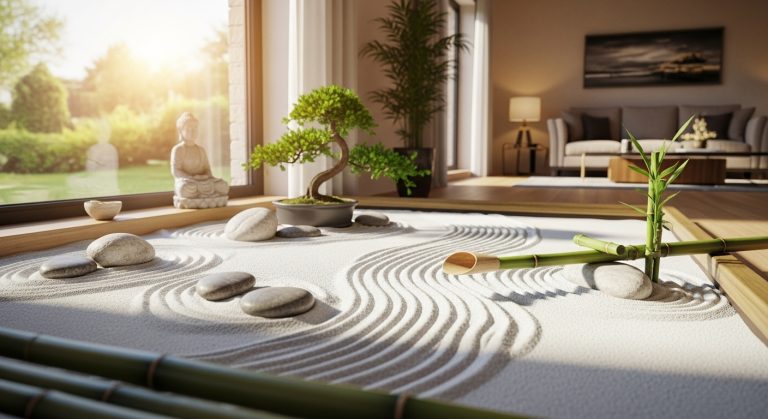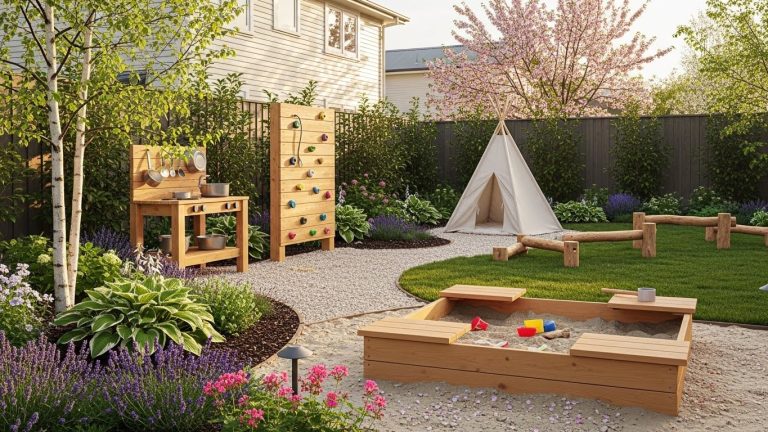15 Outdoor Flower Garden Ideas to Transform Your Space
Ever walk past a garden and think, “Wow, how do they make it look so effortless?” Sometimes the simplest switch in your outdoor space can completely transform your mood and even make you look forward to stepping outside. I’ve spent countless weekends testing small tweaks, planting patterns, and seasonal flowers, and let me tell you, a well-thought-out flower garden doesn’t just look good—it feels like a mini retreat at home. Whether you have a tiny balcony, a sprawling backyard, or a patchy yard in need of life, there’s a way to make flowers the star without overcomplicating things.
Here’s a collection of ideas that are practical, visually appealing, and absolutely achievable, even if you’re not a professional gardener.
1. Layered Color Borders

If you want your garden to make an immediate impact, layered color borders are a game-changer. Imagine walking past rows of marigolds, petunias, and salvia arranged from shortest to tallest, creating a gradient of colors. This method works wonders for smaller yards because it adds depth without overwhelming the space.
Pros:
- Creates a visually striking effect without complicated layouts
- Easy to maintain once planted correctly
- Works well with both perennials and annuals
Cons:
- Requires planning and measuring for correct height layering
- Some flowers may need seasonal replacements
Mini takeaway: Layering flowers like this feels like nature’s own artwork—simple, structured, and surprisingly calming.
2. Raised Garden Beds
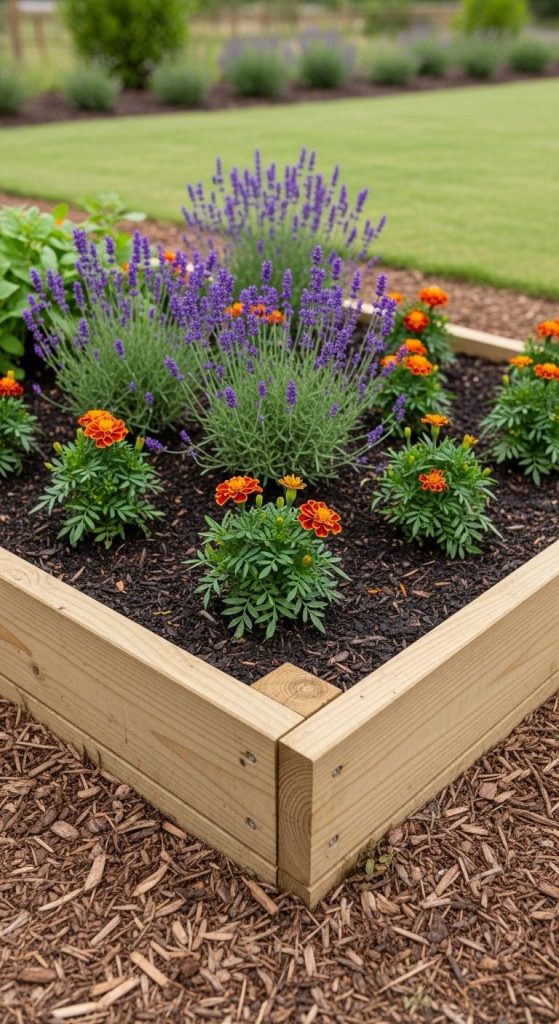
Raised beds aren’t just trendy—they’re practical. If your soil isn’t ideal or you want a neat, organized look, building a small wooden or stone bed can completely change your gardening game.
Pros:
- Easier to control soil quality and drainage
- Reduces back strain when planting or weeding
- Can be designed to fit almost any backyard shape
Cons:
- Initial setup cost can be higher
- Wood beds may require treatment to avoid rot
Mini takeaway: A raised bed is like a stage for your flowers—it frames them perfectly and keeps everything neat.
3. Vertical Flower Walls
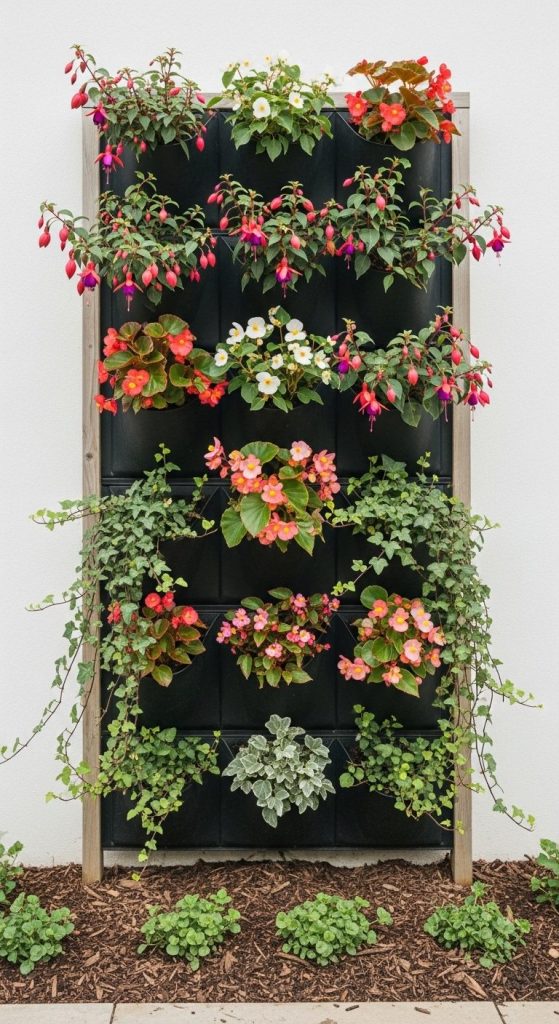
For those with limited space, vertical gardens turn plain fences or walls into colorful displays. Use pocket planters, trellises, or even repurposed wooden crates to hold flowers like fuchsias, begonias, or trailing ivy.
Pros:
- Perfect for small yards or balconies
- Adds height and interest to otherwise flat walls
- Great for privacy screens with flowering vines
Cons:
- Needs regular watering as vertical planters dry out faster
- Strong support needed for heavier plants
Mini takeaway: Vertical gardens are proof that even the smallest spaces can feel lush and full of life.
4. Cottage-Style Mixed Beds

Cottage gardens are charming because they look effortless while being structured behind the scenes. Mix daisies, foxgloves, lavender, and poppies in informal clusters for a relaxed, inviting vibe.
Pros:
- Low-maintenance if using perennials
- Extremely romantic and visually dense
- Attracts pollinators like bees and butterflies
Cons:
- Can appear chaotic if spacing isn’t considered
- Some flowers may self-seed aggressively
Mini takeaway: A cottage-style garden makes your outdoor space feel cozy and timeless.
5. Circular Flower Beds Around Trees
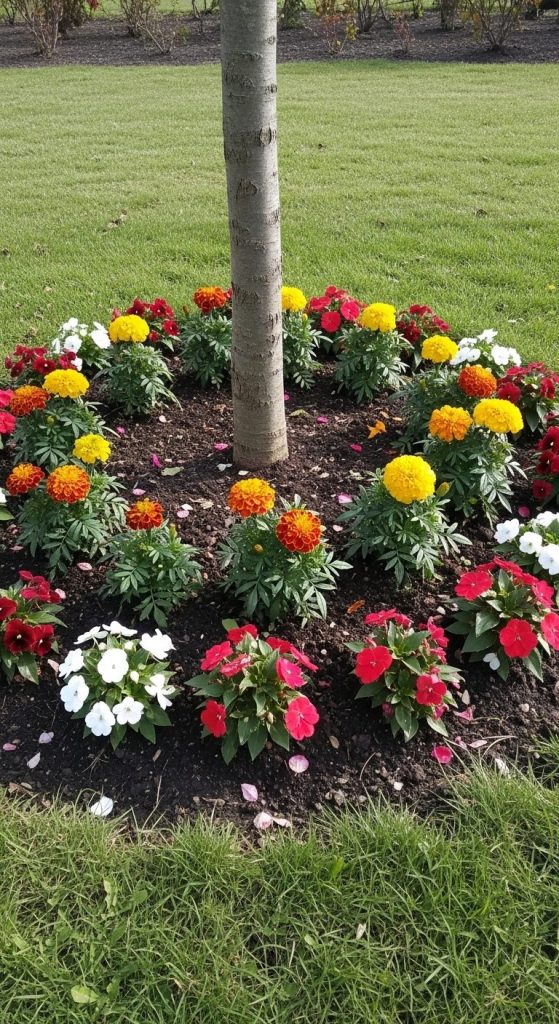
Turn an existing tree into the centerpiece by planting a circular flower bed around it. Marigolds, pansies, and impatiens work well under partial shade.
Pros:
- Highlights existing landscape features
- Fills awkward spaces efficiently
- Creates a natural gathering spot for birds
Cons:
- Shade-loving flowers needed under trees
- Requires careful layering to avoid root competition
Mini takeaway: Circular beds give structure and elegance without looking overdone.
6. Seasonal Color Rotation
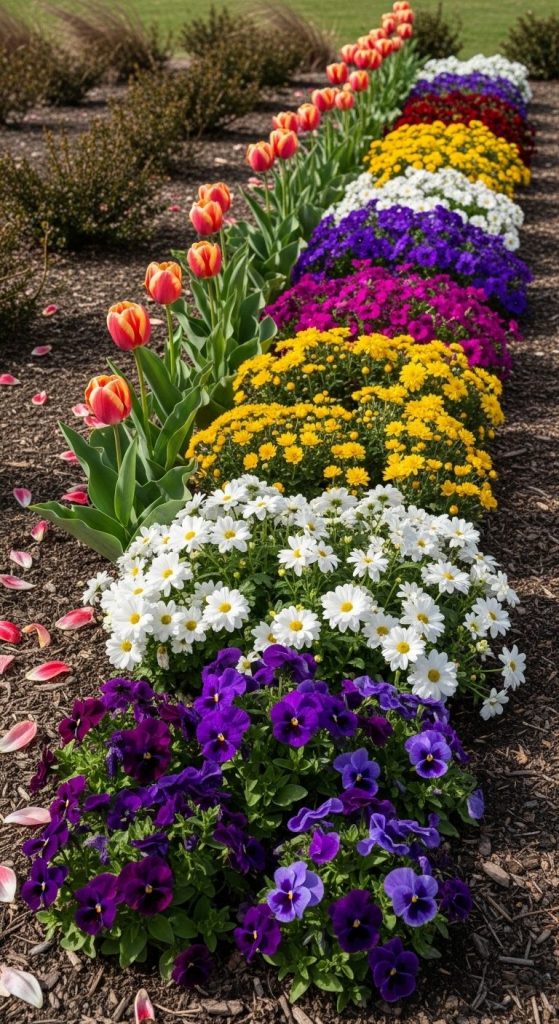
Rotate flowers by season to keep your garden vibrant year-round. Spring tulips, summer petunias, fall chrysanthemums, and winter pansies ensure your garden always has a focal point.
Pros:
- Keeps your garden fresh all year
- Provides a reason to enjoy different blooms seasonally
- Helps in planning companion planting
Cons:
- Requires planning and seasonal purchases
- Some flowers may need extra care depending on weather
Mini takeaway: A garden that changes with the seasons keeps you excited to step outside every month.
7. Pollinator-Friendly Corners
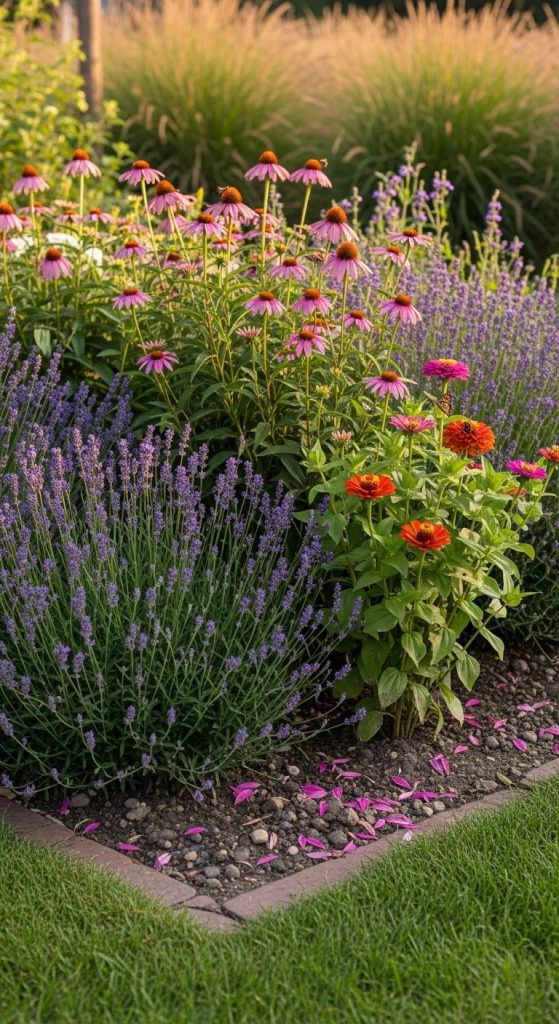
Create a flower patch specifically for bees, butterflies, and hummingbirds. Lavender, coneflowers, and zinnias are excellent choices.
Pros:
- Encourages pollination for your other plants
- Creates movement and life in your garden
- Educational and satisfying for kids or guests
Cons:
- Can attract pests if not monitored
- Requires regular deadheading to keep blooms fresh
Mini takeaway: Pollinator gardens are small but powerful—nature’s own performance right in your backyard.
8. Pathway Flower Borders

Line your garden paths with flowers for a storybook effect. Low-growing blooms like alyssum, lobelia, and dwarf marigolds work best along walkways.
Pros:
- Adds instant charm to any garden layout
- Makes walking through your garden a sensory experience
- Can be done on narrow or winding paths
Cons:
- Needs regular trimming to keep paths accessible
- Can be damaged in high foot traffic areas
Mini takeaway: Flower-lined paths make every stroll feel intentional, like your garden is guiding you.
9. Container Gardening Clusters
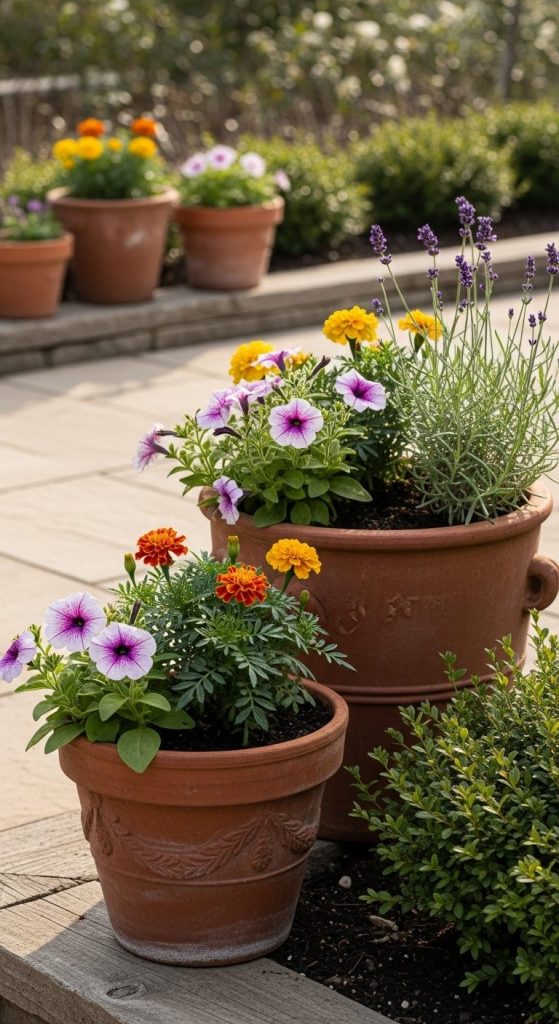
Group flowers in decorative pots or planters for flexibility and mobility. Use ceramic, terracotta, or even repurposed buckets for an eclectic look.
Pros:
- Easy to rearrange and experiment
- Good for patios, decks, or small yards
- Allows soil and water control for different plants
Cons:
- Needs more frequent watering than ground beds
- Limited root space may restrict growth
Mini takeaway: Container clusters let you curate a mini-gallery of blooms that can move with the sun or your mood.
10. Monochromatic Flower Sections

Pick one color family and plant multiple shades of it together. For example, all pinks: peonies, pink geraniums, and petunias. This creates a dramatic but cohesive effect.
Pros:
- Eye-catching without being overwhelming
- Easier to plan than multi-color chaos
- Feels sophisticated and intentional
Cons:
- Less variety in blooms and textures
- Can look flat if different plant heights aren’t used
Mini takeaway: A single-color theme gives your garden a gallery-like quality—it feels curated but effortless.
11. Butterfly Bush Focal Points

Plant butterfly bushes (Buddleja) as a single or double focal point. These large, flowering shrubs are hardy and draw plenty of wildlife.
Pros:
- Long bloom season
- Supports pollinators
- Strong visual anchor in your garden
Cons:
- Can grow aggressively in some climates
- Requires pruning to maintain shape
Mini takeaway: A butterfly bush is like adding a living sculpture that entertains both humans and insects.
12. Low-Maintenance Perennial Beds

Choose hardy perennials like daylilies, hostas, and black-eyed Susans for long-term beauty with minimal upkeep.
Pros:
- Flowers return year after year
- Less frequent planting and watering
- Great for busy gardeners or seasonal travelers
Cons:
- Limited bloom variety compared to annuals
- Initial investment may be higher
Mini takeaway: Perennials are the “set it and forget it” option for a consistently pretty garden.
13. Aromatic Flower Corners
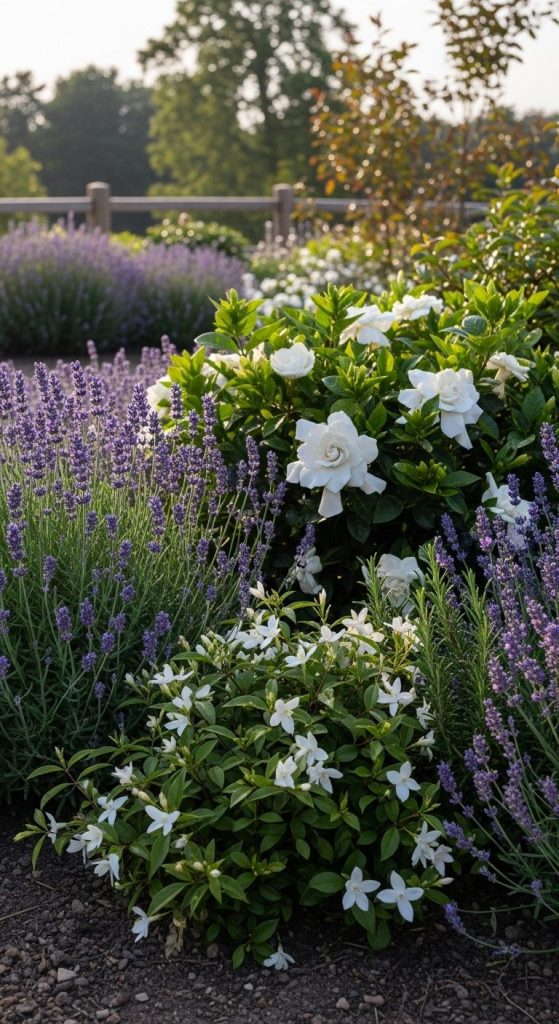
Plant scents that make your garden inviting: lavender, gardenias, jasmine, or rosemary. Imagine stepping outside and feeling a gentle fragrance surround you.
Pros:
- Enhances outdoor experience beyond visuals
- Some herbs double as cooking ingredients
- Relaxing and mood-boosting
Cons:
- Some aromatic plants need full sun
- Seasonal limitations for certain flowers
Mini takeaway: Fragrant flowers turn your garden into a multi-sensory escape.
14. Wildflower Mini-Meadows
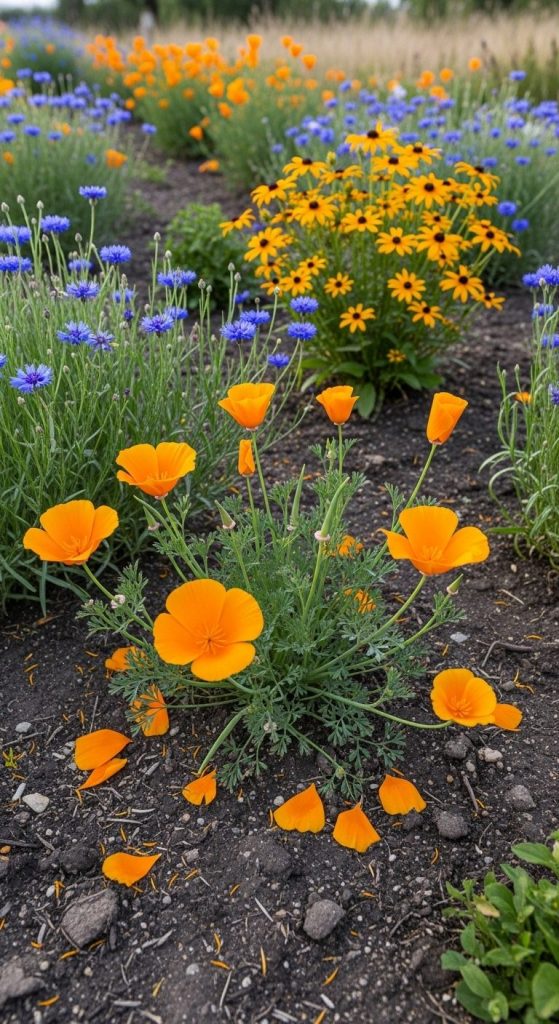
Dedicate a section of your yard to a small wildflower patch. California poppies, cornflowers, and black-eyed Susans are perfect for a natural look.
Pros:
- Low-maintenance once established
- Attracts pollinators
- Adds soft, romantic movement in the wind
Cons:
- Requires initial weeding and preparation
- Bloom times vary, leaving gaps if not planned
Mini takeaway: Mini wildflower meadows are effortless and evoke a “meadow stroll” vibe right at home.
15. Seasonal Hanging Baskets

Suspend flowers in hanging baskets near porches or patios. Fuchsias, trailing petunias, and lobelia spill beautifully over the edges.
Pros:
- Elevates vertical space visually
- Flexible placement and easy rearrangement
- Great for small yards or balconies
Cons:
- Requires daily watering in hot weather
- Limited root space
Mini takeaway: Hanging baskets feel like your flowers are performing from a stage above, giving height and drama without crowding ground space.
Conclusion
Transforming your outdoor space with flowers doesn’t have to be complicated or costly. From layered borders to aromatic corners, each idea here can be adapted to your yard, balcony, or garden plot. What’s beautiful about gardening is how personal it feels—each flower arrangement reflects your taste, patience, and creativity. Personally, I love starting with one small section, testing a color or layout, and seeing it bloom over time. The small wins in gardening are surprisingly addictive.
Pick one idea that speaks to you and start there. Whether it’s a wildflower patch, a raised bed, or a fragrant corner, even tiny changes bring huge satisfaction. By experimenting, observing, and enjoying the process, your outdoor space becomes a retreat you actually look forward to entering every day.

Ashley Ellison is a skilled writer and avid bowler. Her passion for storytelling and dedication to the sport have led her to participate in various national bowling leagues. With a unique combination of talents, Ashley approaches every challenge with creativity and a relentless drive to succeed.

